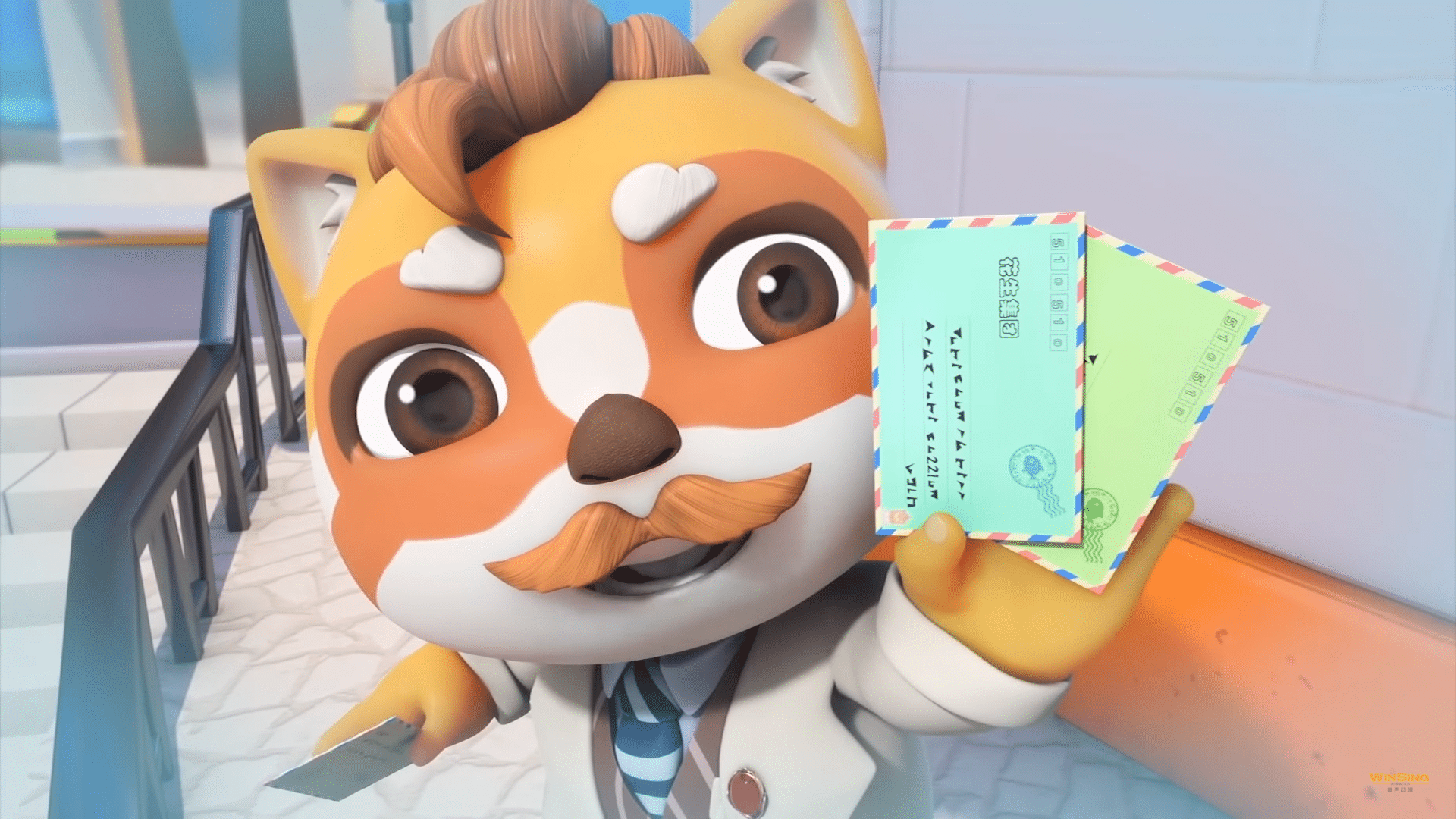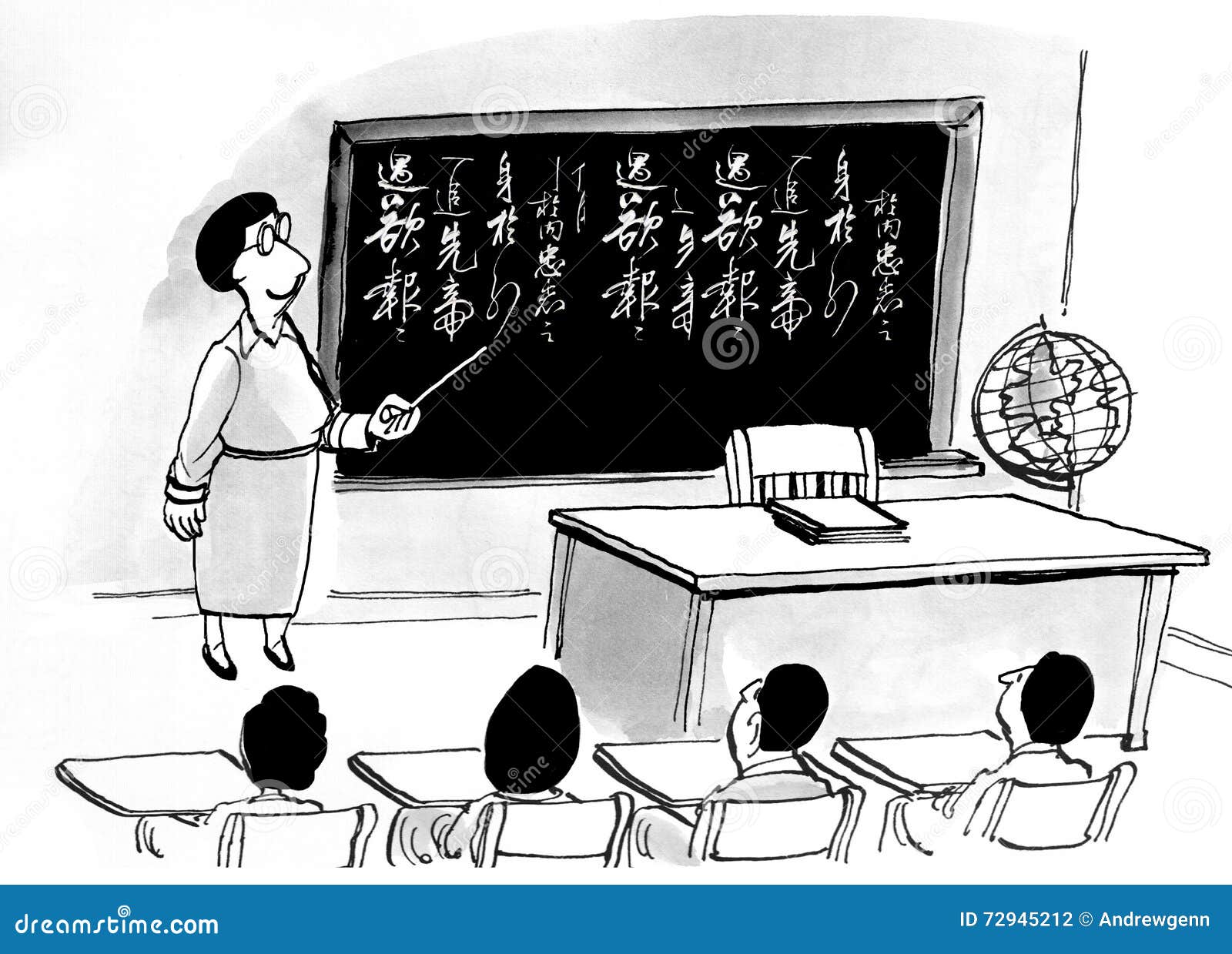Chinese language cartoons, with their captivating visuals and poignant narratives, have emerged as a cultural phenomenon that transcends borders. From their humble beginnings to their global recognition, these animated creations offer a fascinating glimpse into Chinese culture and society.
The diverse genres and unique visual styles of Chinese cartoons reflect the richness and diversity of Chinese art and storytelling. From whimsical comedies to thought-provoking dramas, these animations captivate audiences of all ages.
Historical Evolution of Chinese Language Cartoons

Chinese language cartoons have a rich history that spans over a century. The earliest known Chinese cartoon, “The Adventures of Sanmao”, was created in 1922 by Zhang Guangyu. This cartoon was a silent film that told the story of a young boy named Sanmao who travels around China, experiencing various adventures.In
the 1930s, Chinese cartoons began to be produced with sound. One of the most popular cartoons of this era was “The Monkey King”, which was based on the classic Chinese novel “Journey to the West”. This cartoon was a huge success and helped to popularize Chinese cartoons both in China and abroad.After
the founding of the People’s Republic of China in 1949, Chinese cartoons began to be used as a tool for promoting the government’s policies. One of the most famous cartoons of this era was “Little Soldier Zhang Ga”, which told the story of a young boy who joins the People’s Liberation Army and fights against the Kuomintang.In
the 1980s, Chinese cartoons began to be produced with a more commercial focus. One of the most popular cartoons of this era was “Black Cat Detective”, which was a detective series that featured a black cat as the main character.
This cartoon was a huge success and helped to establish Chinese cartoons as a major force in the global animation industry.Today, Chinese language cartoons are produced in a wide variety of genres, including comedy, drama, action, and adventure. Chinese cartoons are popular both in China and abroad, and they have played an important role in shaping the culture of China.
Influence of Traditional Chinese Art and Culture on the Development of Chinese Cartoons
Traditional Chinese art and culture have had a profound influence on the development of Chinese language cartoons. Chinese cartoons often feature characters, settings, and stories that are inspired by traditional Chinese art and culture. For example, the character of Sanmao in “The Adventures of Sanmao” is based on a character from a traditional Chinese folk tale.Chinese
cartoons also often use traditional Chinese art techniques, such as ink painting and calligraphy. These techniques give Chinese cartoons a unique look and feel that is different from cartoons from other countries.
Genres and Styles of Chinese Language Cartoons
Chinese language cartoons encompass a wide range of genres, including comedy, drama, action, adventure, fantasy, and educational. Each genre features unique storytelling techniques, visual styles, and target audiences.Comedy cartoons, such as “Pleasant Goat and Big Big Wolf,” often employ slapstick humor, exaggerated characters, and witty dialogue to entertain viewers.
Drama cartoons, like “Balala the Fairies,” explore complex emotions, interpersonal relationships, and moral dilemmas. Action cartoons, such as “Jackie Chan Adventures,” showcase thrilling fight scenes, high-octane stunts, and heroic characters.
Visual Styles and Techniques, Chinese language cartoons
Chinese cartoons exhibit a diverse range of visual styles, influenced by traditional Chinese art forms, anime, and Western animation. Traditional Chinese elements, such as ink-and-wash painting and calligraphy, can be found in cartoons like “Havoc in Heaven.” Anime-inspired styles, characterized by large eyes, vibrant colors, and exaggerated expressions, are evident in cartoons like “Scissor Seven.”
Western animation influences, such as 3D animation and realistic character designs, can be seen in cartoons like “Nezha.”
Comparison of Styles
Different Chinese cartoon studios and artists have developed their own unique styles. For example, the Shanghai Animation Film Studio is known for its classic hand-drawn animation style, while the Beijing Film Academy Animation Department is known for its innovative use of 3D animation.
Individual artists, such as Lu Xiufu and Xu Jingda, have also made significant contributions to the development of Chinese animation styles.
Cultural Impact and Themes

Chinese language cartoons hold significant cultural significance in Chinese society. They have played a vital role in shaping the values, beliefs, and social norms of generations of Chinese people. Chinese cartoons often reflect traditional Chinese culture, history, and mythology, fostering a sense of national identity and pride.
They also address contemporary social issues, providing commentary and insights on the changing landscape of Chinese society.
Themes and Messages
Chinese cartoons commonly depict themes of family, friendship, loyalty, and perseverance. These values are deeply ingrained in Chinese culture and are reflected in the stories and characters presented in cartoons. Additionally, Chinese cartoons often explore themes of social responsibility, environmental protection, and the importance of education.
Reflection of Chinese Values and Beliefs
Chinese cartoons often incorporate traditional Chinese beliefs and philosophies into their narratives. For example, the concept of “yin and yang” (the balance of opposing forces) is frequently depicted in Chinese cartoons. Additionally, Confucian values such as respect for elders, filial piety, and harmony are often emphasized.
Social Issues
Chinese cartoons have also been used to address important social issues. For example, some cartoons have raised awareness about environmental pollution, while others have explored the challenges faced by migrant workers. By addressing these issues, Chinese cartoons play a role in shaping public opinion and promoting social change.
Global Reach and Influence
Chinese language cartoons have gained immense popularity on a global scale, captivating audiences worldwide. This international success can be attributed to several factors, including captivating storylines, visually stunning animation, and relatable characters.
Chinese cartoons have transcended cultural boundaries, resonating with viewers of diverse backgrounds. They offer a unique blend of traditional Chinese aesthetics and modern storytelling techniques, creating a captivating experience for audiences of all ages.
Examples of Globally Popular Chinese Cartoons
- Pleasant Goat and Big Big Wolf: This animated series, featuring anthropomorphic goats and wolves, has become a global phenomenon, capturing the hearts of children and adults alike.
- Boonie Bears: This popular cartoon follows the adventures of two bear cubs and their human friend, showcasing stunning animation and heartwarming storylines.
- Nezha: Based on Chinese mythology, this animated film has gained critical acclaim and commercial success worldwide, showcasing the rich cultural heritage of China.
The success of these and other Chinese cartoons has paved the way for the global expansion of the Chinese animation industry, establishing China as a major player in the international entertainment market.
Industry and Production
The Chinese cartoon industry is a rapidly growing and dynamic sector of the Chinese entertainment industry. It is characterized by a large number of small and medium-sized studios, as well as a few large conglomerates. The industry is supported by a strong government commitment to the development of the animation sector, as well as a growing consumer base for Chinese cartoons.
The production process of Chinese cartoons typically involves the following steps:
- Pre-production: This stage includes the development of the story, characters, and setting. It also involves the creation of storyboards and animatics.
- Production: This stage involves the actual animation of the cartoon. It can be done using a variety of techniques, including traditional hand-drawn animation, computer-generated animation, and stop-motion animation.
- Post-production: This stage involves the editing, sound mixing, and compositing of the cartoon. It also includes the creation of any special effects.
The key players in the Chinese cartoon industry include:
- Shanghai Animation Film Studio: This is the oldest and most prestigious animation studio in China. It is known for producing a number of classic Chinese cartoons, including The Monkey Kingand Nezha Conquers the Dragon King.
- Beijing Film Academy: This is a leading film school in China. It has a strong animation department that has produced a number of talented animators.
- Tencent: This is a Chinese technology company that has a major stake in the animation industry. It owns a number of animation studios, including Penguin Animation and Yaya Pictures.
Future Trends and Innovations

The future of Chinese language cartoons holds immense potential for growth and innovation. With advancements in technology and the increasing global reach of Chinese culture, Chinese cartoons are poised to continue to captivate audiences worldwide.
Emerging trends and technologies, such as artificial intelligence (AI) and virtual reality (VR), are expected to shape the industry. AI can enhance animation techniques, creating more realistic and immersive experiences for viewers. VR can transport viewers into the worlds of their favorite cartoons, providing a truly immersive entertainment experience.
Global Recognition and Influence
The global recognition and influence of Chinese cartoons are expected to continue to grow. As Chinese culture becomes more prominent worldwide, Chinese cartoons will gain a wider audience and appreciation. International collaborations and co-productions will further contribute to the global reach of Chinese cartoons, showcasing the diversity and creativity of the industry.
Emerging Technologies
- Artificial Intelligence (AI):AI can automate animation processes, create realistic character movements, and generate personalized content for viewers.
- Virtual Reality (VR):VR headsets can immerse viewers in the worlds of their favorite cartoons, providing an interactive and immersive experience.
- Augmented Reality (AR):AR technology can blend digital elements with the real world, creating interactive and educational experiences for viewers.
- Blockchain:Blockchain technology can secure the distribution and ownership of digital cartoons, preventing piracy and ensuring fair compensation for creators.
Conclusion
As Chinese language cartoons continue to gain global prominence, they serve as a testament to the power of storytelling to bridge cultural divides. Their future holds endless possibilities, with emerging technologies and innovative storytelling techniques promising to push the boundaries of this captivating art form.
FAQ Explained
What are the origins of Chinese language cartoons?
The origins of Chinese language cartoons can be traced back to the early 20th century, with the production of short animated films.
What are some of the most popular Chinese language cartoons?
Some of the most popular Chinese language cartoons include “Pleasant Goat and Big Big Wolf,” “Boonie Bears,” and “Nezha.”
How have Chinese language cartoons influenced global animation?
Chinese language cartoons have influenced global animation through their unique visual styles, innovative storytelling techniques, and cultural themes.